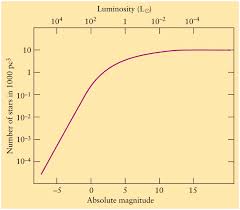
Scylla and Charybdis: two bad choices
If you tell some that you have found yourself "between Scylla and Charybdis," you might elicit nothing more than a puzzled expression. That phrase, which was popular through the early 20th century, has since fallen ten fathoms out of vogue. It has been replaced by the far more prosaic -but much easier to pronounce- phrase, "between a rock and a hard place." To be between Scylla and Charybdis is to be in a situation in which you can only choose between two equally dangerous or unpleasant options. In the mythological Universe, one would have found Scylla and Charybdis in the Strait of Messina, which separates Sicily from Italy. Scylla and Charybdis were just off the opposite shores at the strait's narrowest point. Whereas Charybdis was merely a whirlpool -albeit the most ferocious of them all- Scylla was literally monstrous. Having sported six hideous serpent heads protruding out of an island-wide body covered in scales, Scylla was arguably the most grotesque of all the monsters that terrorized the world. (We're not including the wide assortment of unutterably grotesque creatures that populated the underworld.) However, she wasn't always a monster. Instead, she had been a lovely and kind maiden. Scylla's tragic story truly begins with the tale of the fisherman Glacus. One day, Glacus had netted a wide assortment of fish off the Sicilian coast. He brought his catch on shore and scattered them over the grass to dry. While he rested, the fish, which were supposed to have already been dead, started moving toward the sea. Glacus watched amazed as all the fish slid off the grass and back into the water. He didn't know if some ocean deity had summoned them back to their home or if, perhaps, the grass, itself, had reanimated them. Out of curiosity, Glacus ripped up a handful of grass and swallowed it. Immediately he experienced an irresistible urge to follow the fish back into the sea. Once under water, he found himself in the company of many minor sea deities, all of whom were delighted at his presence. They implored Thetis, an ancient ocean goddess, to transform Glaucus into a sea creature so he could remain with them forever. Thetis drew forth a hundred rivers and commanded Glacus to swim through their point of confluence. By doing so, he became a merman: half fish, half human. In this new form, he could breathe both underwater and above land. For a while he lived quite happily as he was able to explore the vast mysterious realms beneath the sea while still rising above the surface to visit the lands he had abandoned. One afternoon he returned to the same Silician shore where he had first plunged into the sea. As he rested on the rocks, he saw the most beautiful woman he had ever seen. Her name was Scylla, meaning simply "of Sicily." Drawn forth by an urge as strong as that which first compelled him to dive into the sea, Glacus rapidly approached Scylla and professed his love. Repulsed by his piscine appearance, Scylla fled to a nearby mountain summit which Glacus couldn't access. He shouted to her of his devotion and affection and repeatedly begged her to become his wife. Yet, all his earnest entreaties were to no avail. Abjectly miserable, Glacus desperately sought the aid of the witch Circe. He told Circe of his unslakable passion for Scylla and pleaded with her to give him a phial of love potion with which he could snare the elusive maiden. Such was the ardor of Glacus' passion and the poetry of his words that Circe, herself, fell in love with him. After Glacus finished speaking, Circe took his face in her hands and spoke of her own love. "Forget Scylla," she implored him. "I love you and I shall happily be your wife for ever after." Glacus scorned her love cruelly. "Do not touch me!" he shouted. "I have love only for Scylla and can never love another!" Reduced to tears, Circe softly said, "Wait here while I prepare the potion." After most of the afternoon elapsed, Circe, still weeping, returned with a large phial of purple liquid. "Pour this potion into the water where the maiden you seek bathes. It is a decoction of sacred herbs. As soon as she is immersed in it, she shall be yours." Glacus took it eagerly and returned to the Siclian shore. He remained hidden and watched as Scylla arrived. He scattered the potion onto the sea surface just before she dove in. To his horror, great clouds of black smoke issued from the water as soon as Scylla immersed herself in it. He helplessly listened to her anguished shrieks and then saw a great monster arise out of the water: an enormous beast with six heads. The maiden he adored was transformed into a monster he feared. Glacus swam madly away and only barely escaped with his life. Scylla remained rooted to that shore in a state such unspeakable misery she grew to hate everything and everyone. Any mariner who ventured too close to the monster was slaughtered. Soon after Scylla's transformation, Charybdis formed along the opposite shore. It is said that Scylla in her rage thrashed the waters around her so violently that a whirlpool formed at the other side of the strait. Others insist that Charybdis was a creature in its own right: one who assumed the form of a whirlpool that swallowed anything in its path and then each day regurgitated that which it had consumed. Odysseus, Jason and Aeneas, the Trojan who traveled to Italy and founded the Roman race, all faced the double peril of Scylla and Charybdis. When Odysseus and his crew tried to sail through the Strait of Messina, Odysseus made the grave error of steering his ship a bit too far away from the whirlpool. Consequently, Scylla grabbed six of his men. Each man was then eaten alive by one of the heads. Of all the horrific experiences Odysseus endured during his Odyssey, he said that watching half a dozen of his men being devoured by the Scylla was the worst of them all. How it would have astonished Odysseus to have learned that Scylla was originally the loveliest and most harmless of maidens.
THE SOUTHWORTH PLANETARIUM
207-780-4249 www.usm.maine.edu/planet
70 Falmouth Street Portland, Maine 04103
43.6667° N 70.2667° W
Altitude: 10 feet below sea level
Founded January 1970
Julian Date: 2458995.16
2019-2020: CLV
THE DAILY ASTRONOMER
Wednesday, May 27, 2020
Remote Planetarium 42: Stellar Properties
_________________________
A profuse apology to the math phobes.
While we are designing these classes for the layperson, at times we truly need to delve into mathematics more than some people would like. Today is one of those times. While we promise we will be as conceptual as possible, we can't completely avoid the math. We will offer a conceptual summar at the article's conclusion.
___________________________
Today we begin to learn how we can determine stellar properties with the use of only a few pieces of information. First, we offer a quick review of terms
- Apparent magnitude (m) a measure of a celestial body's apparent brightness. In this system, the brighter the star, the lower the magnitude value. Invented by Hipparchus of Nicea and then quantified by N.R. Pogson, the magnitude system's original range extended from 1 - 6, with the brightest stars classified as magnitude 1 and the dimmest stars visible to the unaided eye classified as magnitude 6. The system has expanded considerably since its inception. Now, the range extends from -26.7 (the Sun's apparent magnitude) to 27, the faintest stars that are telescopically detectable. The magnitude scale is logarithmic with a factor of 2.5. So, a magnitude 1 star is 2.5 times brighter than a magnitude 2 star, which is 2.5 times brighter than a magnitude 3 star, et cetera. The actual factor is approximately 2.512, which equals the fifth root of 100. So, a magnitude 1 star is precisely 100 times brighter than a magnitude 6 star.
- Absolute magnitude (M) Absolute magnitude measures a celestial body's intrinsic brightness. The absolute magnitude value is equal to what the celestial body's magnitude would be were it 10 parsecs away.
- Light year: the distance that light travels in one Earth year when moving through a vacuum. As light speed in a vacuum equals 186,290 miles per second, a light year is equal to approximately 5.8 trillion miles.
- Luminosity: a radiant body's energy output per second. A star's luminosity is proportional to the square of its radius and the fourth power of its temperature.
- Parallax angle: the angle by which a foreground object's position shifts relative to more distant objects. Astronomers employ the parallax method to ascertain the distances of stars. The parallax method is valid out to a distance of 500 parsecs.
- Parsec: a unit of distance used in astronomy. A parsec equals approximately 3.26 light years.
The first task at hand is to determine a star's absolute magnitude, or its intrinsic brightness. Fortunately, determining this value requires only two pieces of information: the star's apparent magnitude and its distance. As we are still loitering around the general galactic vicinity, we shall restrict ourselves to the parallax determination method. Recall that to calculate a star's distance in parsecs, one need only divide 1 by the parallax angle expressed in arc-seconds:
d = 1/p"
Once we determine this value, we turn next to the
DISTANCE MODULUS:
m - M = 5log(d) - 5
where m = apparent magnitude; M = absolute magnitude; d = distance in parsecs. The log(d) is the logarithm of d to the base 10. (Refer to the rapid logarithm review posted at the end of this article.) We can rearrange this equation to solve for M:
M = m - 5log(d) + 5
m - M is known as the "distance modulus" To help with understanding, we will work through an example:
Ross 248:
Parallax angle: 0.316"
The distance equals 1/0.316" = 3.16 parsecs (approximately 10.3 light years)
The apparent magnitude is 12.3, a very faint star. It is more than one hundred times fainter than the dimmest stars visible to the unaided eye!
Now, we have the distance (3.16 parsecs) and the apparent magnitude (12.3).
We turn next to the distance modulus equation:
M = m - 5log(d) + 5
M = 12.3 -5log(3.16) + 5
log (3.16) = 0.499 (Or, 10 raised to the power of 0.499 equals 3.16. See the rapid logarithm review below.)
M = 12.3 -(5)(0.499) + 5
M = 12.3 -2.495 + 5
M = 14.8
If Ross 248 were at a distance of 10 parsecs, its magnitude would be 14.8. Quite faint, indeed. For comparison, if the Sun were at a distance of 10 parsecs, its magnitude would be 4.83
Now that we know Ross 248's absolute magnitude, we can now determine its luminosity relative to the Sun.
This time, we will avoid an equation and use a handy chart as seen below. Ross 248's absolute magnitude is 14.8. Its luminosity is 0.0018 that of the Sun. Here we need to point out that the luminosity is related to the star's bolometric magnitude, the magnitude averaged over the entire EM spectrum. We will discuss bolometric magnitudes in greater detail later in the course. Our aim today is to explain the procedure by which we can ascertain a star's luminosity

We can then calculate Ross 248's luminosity: about 0.18% that of the Sun's. A low luminosity star to be sure. Once we know the star's luminosity we can proceed to the next stage: its size and temperature. We recall the luminosity equation:

Since we know the star's luminosity relative to the Sun, we can set a ratio of the star's luminosity to that of the Sun. Setting this ratio eliminates the 4, pi and the Stefan-Boltzmann constant, leaving only the radius squared and the temperature raised to the fourth power. If we can determine the value of either the size or the temperature we can readily calculate the value of the other. Remotely, we cannot ascertain a star's size. We can determine a star's temperature. At some point soon we'll discuss temperature determination procedures in greater detail. Today's focus will be on the star's spectral type. By observing the star's spectrum, astronomers can classify it by spectral type. The main spectral classifications are as follows

The arrangement O B A F G K M is also a temperature sequence, with O stars being the hottest and M the coolest. Remember the mnemonic "Oh, be a fine girl kiss me!" Or, if you're worried about offending someone, you can replace "girl" with "gorilla," or "goldfish" or "gerontologist," if you happen to be fond of scientists who study aging.)
The associated temperatures are as follows:
- O 28,000 - 50,000 K*
- B 9,900 - 28,000 K
- A 7400 - 9900 K
- F 6000 - 7400 K
- G 4900 - 6000 K
- K 3500 - 4900 K
The different spectral classes are further divided into numerical gradations specific to more narrow temperature ranges.
Ross 248 is an M6 V star. We conclude that it's effective temperature is 2,799 K. (V indicates a "dwarf" or "main sequence" star, terms we'll introduce tomorrow.) We can then calculate the size once we know the luminosity and temperature. Ross 248's radius is 0.16 that of the Sun. Not only is Ross 248 a low luminosity star, it is also cool and small, at least by stellar standards. Were we to approach this star, ourselves, it would seem gargantuan!
CONCEPTUAL SYNOPSIS
- STEP 1: We can use trigonometric parallax to determine the distances to the closest stars. A nearby star's distance (in parsecs) equals 1 divided by the parallax expressed in arc-seconds.
- STEP 2: We use the distance modulus to determine the star's absolute magnitude. This modulus equation relates a star's absolute magnitude, apparent magnitude and distance. We can directly observe a star's apparent brightness and so will know its apparent magnitude. By knowing the star's apparent magnitude and distance, we can calculate the star's absolute magnitude or intrinsic brightness
- STEP 3: A star's absolute magnitude is directly related to its luminosity, or energy output. We can use a chart (as we did today) or a formula to calculate the star's luminosity relative to that of the Sun.
- STEP 4: We know that a star's luminosity is related to its size (radius) and temperature. By knowing a star's luminosity value relative to the Sun we can set up a ratio relating the star's size and temperature to that of the Sun, as well.
- STEP 5: By observing the star's spectral type, discernible through analysis of its spectrum, or light emissions, we can determine its temperature. The main spectral classes are O, B, A, F, G, K and M. This sequence is in order of decreasing temperature, with O being the hottest and M the coolest.
- STEP 6: Now that we know the luminosity and temperature, the star's size (radius) can be calculated.
Through these steps astronomers can measure the luminosities, sizes and temperatures of the close stars. As we will learn, these properties will lead us to know the stars' masses and even life cycles. Tomorrow we begin our discussion of the H-R Diagram: the main tool stellar astronomers employ to measure stars.
_______________________________________________________
Rapid logarithm review:
Before the advent of super scientific calculators that now enable people to perform immensely complex calculations with just a few button presses, mathematical people needed tools to assist them in their complicated computations. One of the most useful tools was the logarithm, invented in the early 17th century by the British astronomer/mathematician John Napier (1550-1617). Logarithms transformed intricate multiplication problems into more manageable addition problems.
Now, to understand them, let's examine a few examples:
Log 100 = ?
Most logarithms include a base number written in subscript between the word "log"and the number. If no number appears, base 10 is assumed. In the example above, Log 100 = is asking us, "10 raised to what number equals 100?" The answer is 2 because 10^2 (or 10 x 10) equals 100.
Log 100 = 2
Log 1000 = ?
"10 raised to the power of which number equals 1000?" We know that 10 raised to the 3rd power (or 10 x 10 x 10) = 1000.
Log 1000 = 3
One can insert any number next to the logarithm to yield a value, although not necessarily a neat whole number.
Log 23 = 1.36172. If you raise 10 to the power of 1.36172, the result will be 23.
_______________________________________________________
*K = Kelvin. An absolute temperature scale. 0 K is absolute zero, equal to -273.15 degrees C (-460 degrees F).
To subscribe or unsubscribe from the Daily Astronomer: